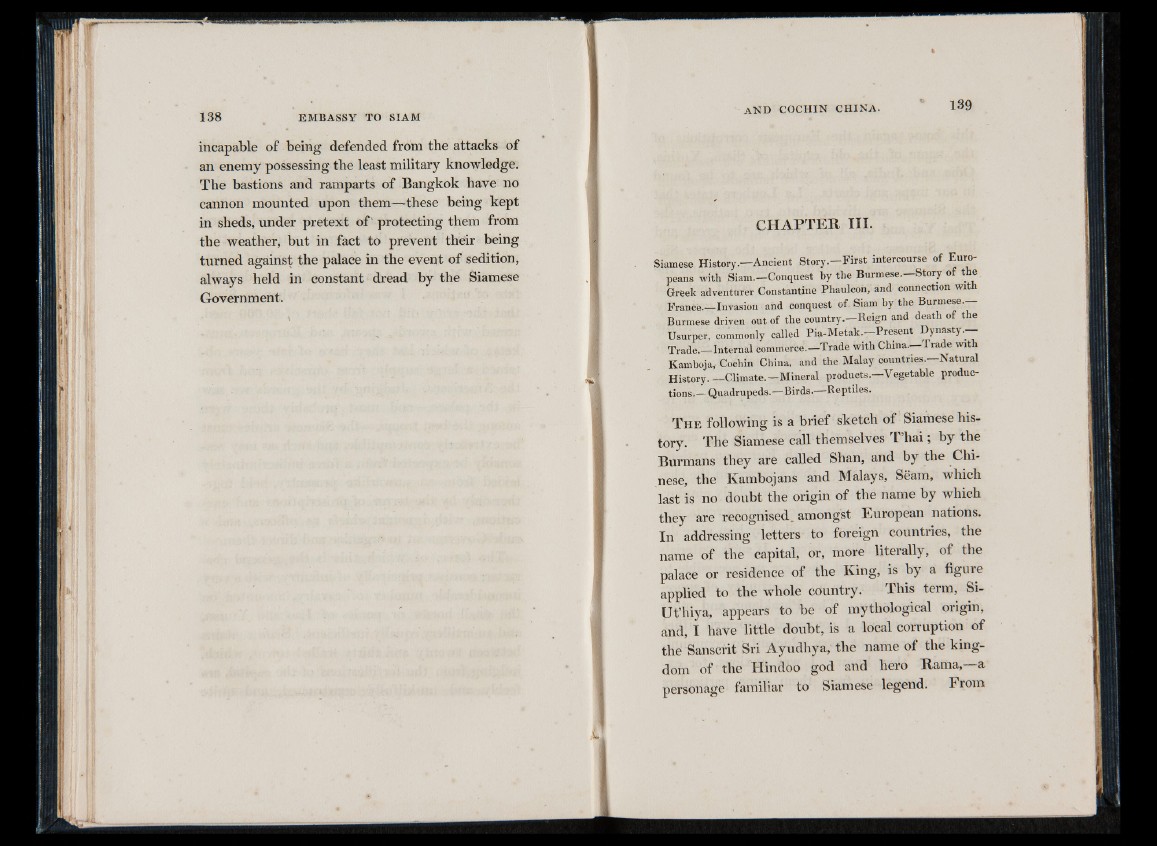
incapable of being defended from the attacks of
an enemy possessing the least military knowledge.
The bastions and ramparts of Bangkok have no
cannon mounted upon them—these being kept
in sheds, under pretext of' protecting them from
the weather, but in fact to prevent their being
turned against the palace in the event of sedition,
always held in constant dread by the Siamese
Government.
C H A PT E R III.
Siamese History.—Ancient S to ry .-F ir st intercourse of Europeans
with Siam.—Conquest by the Burmese. Story o t e
Greek adventurer Constantine Phaulcon, and connection with
France.—Invasion and conquest of. Siam by the Burmese.
Burmese driven out of the country.—Reign and death of the
Usurper, commonly called Pia-Metak. Present Dynasty.^
Trade.—Internal commerce.—Trade with China.— Trade with
Kamboja,- Cochin China, and the Malay countries. Natural
History.—Climate.—Mineral products—Vegetable productions.—
Quadrupeds.—Birds.—Reptiles.
T h e following is a brief sketch of Siamese history.
The Siamese c a ll themselves T ’hai ; by the
Burmans they are called Shan, and by the Chinese,
the Kambojans and Malays, Seam, which
last is no doubt the origin of the name by which
they are recognised, amongst European nations.
In addressing letters to foreign countries, the
name of the capital, or, more literally, of the
palace or residence of the King, is by a figure
applied to the whole country. This term, Si-
Ut’hiya, appears to be of mythological origin,
and, I have little doubt, is a local corruption of
the Sanscrit Sri Ayudhya, the name of the kingdom
of the Hindoo god and hero Rama, a
personage familiar to Siamese legend. From